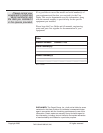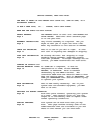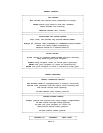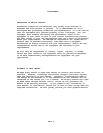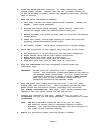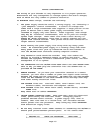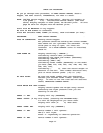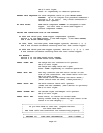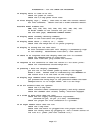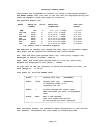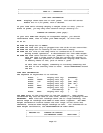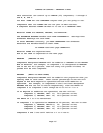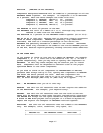GETTING STARTED, READ THIS PAGE.
THE NEXT 13 PAGES OF THIS MANUAL WILL GUIDE YOU, STEP BY STEP, TO A
SUCCESSFUL STARTUP.
IT WON'T TAKE LONG; SO.... PLEASE, DON'T SKIP AHEAD.
HERE ARE THE STEPS YOU WILL FOLLOW.
SAFETY HAZARDS: TWO HAZARDS exist on this unit: MIX BLADES and
Page 4 SLIDE VALVES. Read this short sensible page
so no one gets hurt.
ASSEMBLY INSTRUCTIONS: Very little assembly is required. But you
Page 6 might as well get it right the first time.
ALSO: Pay attention to the section on WIRING.
CHECK OUT PROCEDURE: This is to see if you did it right. It also
Page 11 will tell if anything was damaged in shipping.
LOAD CELL CALIBRATION: We already did this. But shipping or rough
Page 15 handling during assembly sometimes creates
load cell problems. If weight readings are not
correct, you MUST recalibrate the load cells.
TURNING ON OUTPUTS and
SETTING MATERIAL TYPES: To "TURN ON" a component, it must be
Page 16 designated as to TYPE, either REGRIND,
NATURAL, or ADDITIVE. Each is handled
differently by the MATH routines. The
controller MUST know the material TYPE to know
what the setting means. This is IMPORTANT. Be
SURE you UNDERSTAND this section before trying
to operate your system.
RATE CALIBRATION: This is NOT really necessary. But if your
Page 19 system uses non-standard equipment, you MAY
want to do this.
SETTINGS and NORMAL OPERATION:
Page 20 From this point forward, operating your system
is a snap. This section tells you just how
simple it is and exactly what to expect under
normal operating conditions.
SPECIAL FEATURES: Your system can do much more then you may
Page 23 know. This page reviews briefly some of the
added features that are available to you and
where in this manual you can find them.
PROCEED TO: SAFETY HAZARDS NEXT PAGE
Page 3




